|
The ultimate measure of the success of an education system is not
how literate or numerate its graduates are or what they say or believe.
Rather the measure of the ultimate success of an education system is whether it
produces a people that conserves the balances and flows of our planet that sustain
humanity long term.
The
overwhelming evidence of the statistics of our behaviour is that the
current Anglo-American Education Curriculum Framework is fatally flawed.
It would take several planet Earth's to sustain all of humanity with our
lifestyle. We are destroying vital, minerals at an unprecedented rate.
We fail to address this failure of our education system at our peril.
This page
attempts to identify the fundamental flaws in our current education
framework (see the New Zealand Curriculum Framework) and provide a more
sustainable model (See the Compassionate Curriculum Framework).
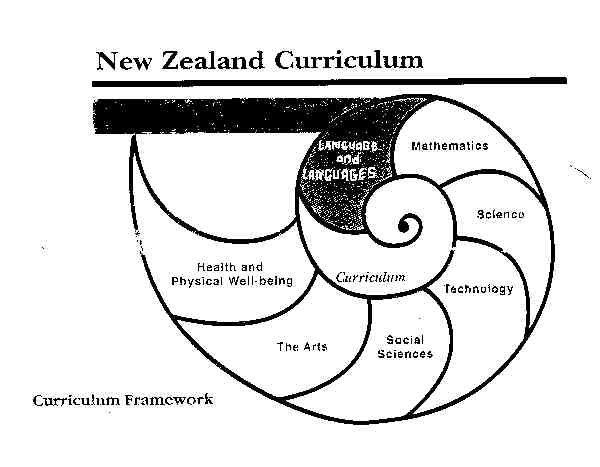
COMMENT on
The New Zealand National Education Curriculum Framework.
This curriculum
framework assumes science is an amoral way of thinking, as are the other
“learning areas”. Each is compartmentalised and they occur in the
following order:
Curriculum
Language
and Languages
Mathematics
Science
Technology
Social
Sciences
The
Arts
Health
and Physical Well-being
The nautilus shell
presents one of the finest natural examples of a logarithmic spiral.
Each new chamber is built on the previous chamber and enlarges on it in
a constant mathematical progression. The nautilus symbol of an education
curriculum framework reflects the belief that the development of an
individual occurs in a similar progressive way.
Observe how the learning process occurs without compassion.
This use of the
“science” symbol strips it of its original associations with
“split, rend, cleave”.(1)
Inherent in this use of the “science”
symbol is the denial of the limitations of thought and the embracing of
Descartes dictum, “I think, therefore I am.” Thought is deemed to be
knowledge and there is no awareness of the paradox that our act of
consciousness of existence disconnects us from reality. Knowledge
(information) is seen to exist independent of the individual rather than
being integral to their existence. In particular science is deemed to be
the exclusive domain of an elite called “scientists”.
This faith in the power of thought means we are at risk of the misery
caused by the self-deceits and denials of the ego that resides in us
all.
Observe how the
sequence suggests that language development can occur without science
and social science is distinct from science.
Observe how the
“art” symbol occurs in this framework and is defined as a narrow
range of activities rather than being associated with all manner of
skills. (2)
Observe
how the adoption of Descartes’ edict and these uses of the
“science” and “art” symbol coincide with the advent of the
Industrial Revolution with all the excesses enabled by the belief there
can be a logarithmic spiral in consumption.
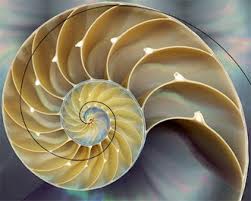 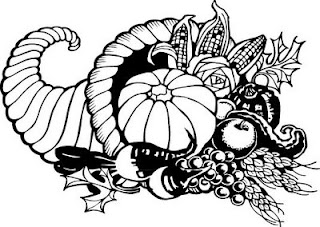
Observe
how this belief system generates and reflects our current unsustainable
behaviour and the associated statistics.
In many ways this nautilus symbol of education reflects our culture’s
belief that eternal, unconstrained growth of our population and
consumption is possible.
The
Compassionate Curriculum
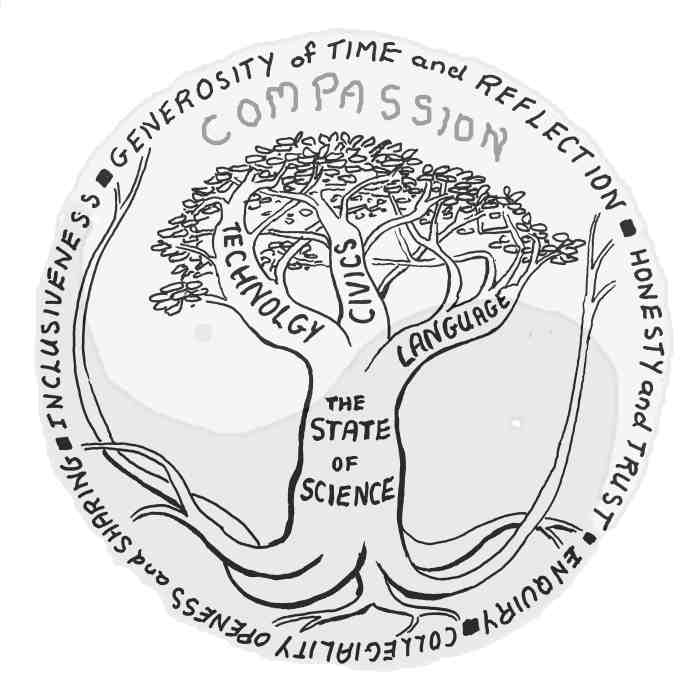
COMMENT
on
The Compassionate Curriculum Framework
This
curriculum framework assumes science is a profound moral way of being.
This state of being exists when the following requisite states exist:
Inclusiveness
Collegiality,
openness and sharing
Inquiry, wonder and forgiveness
Honesty
and trust
Generosity
of Time and Reflection
In the absence of any
of these requisite states then science ceases to exist. This use of the
“science” symbol retains its original associations with “split,
rend, cleave”. (1)
Inherent in this use of the “science” symbol is the acceptance of
the limitations of thought as we embrace the paradox that our act of
consciousness of existence disconnects us from reality. We acknowledge
that with conscious knowledge comes the experience of schism. Thus we
can begin to transcend this paradox.
Observe
how these requisite states are all properties of compassion and thus
science can be seen to be a state of being born of compassion.
Observe
how the acquisition of knowledge does not overtly occur in this
education framework. This is because knowledge occurs with
consciousness. We are knowledge. Information is physical and is in all
things.
What determines whether civilisation occurs is whether or not we use
knowledge in moral ways. This is the art of civics.
Observe
how the “art” symbol does not occur in this framework. This is
because science is understood to be a state of being that enables the
development of all manner of skills, including sustainable language,
wise use of technology and civics in general. In this context the
“art” symbol retains its original associates with skill,
completeness, suitability.(2)
Thus students are empowered in the realisation that just as any one can
learn a spoken language they can also learn to draw, dance and compose
music, for they are also languages.
Observe
how the skills of civics, technology and language are interwoven.
Inherent
in the Compassionate Curriculum is the understanding that
sustainable learning occurs when the requisites for science exist.
Sustainable learning involves embracing change and the continual
forgiveness of our perceived errors. The complementary, interchanging
dynamic of perceived good and bad is seen in the Yin Yang symbol.
Note.
The “tree” symbol too has limitations. Perhaps a sustainable
education curriculum is, for instance, better symbolised as our out-breath.
In the process of breathing out in a healthy way we experience all the
requisites for the state of science to exist. When these exist we are
reminded of how we breathed as a baby and we give all away most freely
so the universe can most fully replenish us. Trees are vital for
our existence. However there is no act more intimate and instructive for
a human being than the breath.
Footnote
September 2012 re Learning Areas
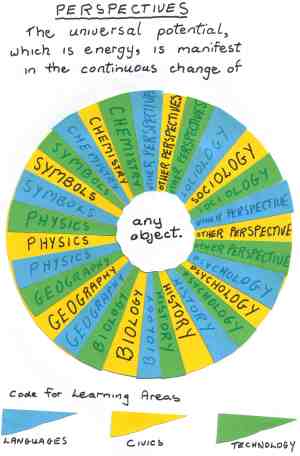
Observe
also the NZNEC Framework’s framing of eight “learning areas”.
These are more usefully symbolised as “perspectives”.
The use of the “perspectives” symbol reminds us that any school or
system of knowledge is relative and uncertain. Though it may be refined
and amplified (become specialized) a perspective is just one of myriad
ways of exploring and reflecting on existence.
Awareness
of this is vital and it enables the humility and inclusiveness most
conducive to sustainable learning. We become more open to the vast array
of possibilities, which is the universal potential. Knowledge is
vitalized in us by this awareness because we realise that each
perspective of an aspect of existence is an active reminder in itself of
the essential continuous change.
And
even as we are reminded in the essential change we are also reminded of
our roles as stewards amidst the universal flux. We have significant
choice of which perspectives we employ and this choice affects how the
universal potential is manifest. By embracing all manner of perspectives
we are better able to transcend the paradox that knowledge disconnects
us from all even it enhances our sentience of existence.
In
the Compassionate Curriculum Framework there are three learning areas -
civics, languages and technology. Even as they are known as three
learning areas they are also known as one.
The
Compassionate Curriculum Framework
Online
Etymology Dictionary
(1) SCIENCE
c.1300, "knowledge (of something) acquired by study," also
"a particular branch of knowledge," from O.Fr. science,
from L. scientia "knowledge,"
from sciens (gen. scientis),
prp. of scire "to know," probably
originally "to separate one thing from another, to
distinguish," related to scindere
"to cut, divide," from PIE root *skei-
(cf. Gk. skhizein "to split, rend,
cleave," Goth. skaidan, O.E. sceadan
"to divide, separate;" see shed (v.)). Modern sense of
"non-arts studies" is attested from 1670s. The distinction is
commonly understood as between theoretical truth (Gk. episteme)
and methods for effecting practical results (tekhne),
but science sometimes is used for practical
applications and art for applications of
skill. Main modern (restricted) sense of "body of regular or
methodical observations or propositions ... concerning any subject or
speculation" is attested from 1725; in 17c.-18
(2) ART
early
13c., "skill as a result of learning or practice," from O.Fr.
art (10c.), from L. artem (nom. ars) "work of art; practical skill;
a business, craft," from PIE *ar-ti- (cf. Skt. rtih "manner,
mode;" Gk. arti "just," artios "complete,
suitable," artizein "to prepare;" L. artus
"joint;" Armenian arnam "make;" Ger. art
"manner, mode"), from root *ar- "fit together, join"
(see arm
(1)).
In Middle English usually with a sense of "skill in scholarship and
learning" (c.1300), especially in the seven sciences, or liberal
arts. This sense remains in Bachelor of Arts, etc. Meaning "human
workmanship" (as opposed to nature) is from late 14c. Sense of
"cunning and trickery" first attested c.1600. Meaning
"skill in creative arts" is first recorded 1610s; especially
of painting, sculpture, etc., from 1660s. Broader sense of the word
remains in artless.
Fine arts, "those which appeal to the mind and the
imagination" first recorded 1767. Expression art for art's sake
(1824) translates Fr. l'art pour l'art. First record of art critic is
from 1847. Arts and crafts "decorative design and handcraft"
first attested in the Arts and Crafts Exhibition Society, founded in
London, 1888.
This
website is devoted to revealing
the essence of energy so humanity may thrive and our daily lives be
filled with wonderment and awe.
It is a labour of love, dedicated to our
children.
davemcarthur1@gmail.com
Updates
and Additions
31
January 2012
A
Practical Guide to Enjoying True Hope
An essay
exploring how the great principles of physics can help identify false
hope and enable the experience of sustaining hope.
5 October 2011
"An
Orwellian Climate"
Letters to
Australasian Chief Science Advisors explaining contemporary confusion in
climate care communication (Prof Peter Gluckman, Prof Ian Chubb, Prof
Tim Flannery, Dr Andrew Glikson )
15 September 2011
The
2011 New Zealand Election Campaign
(A
letter to New Zealand people alerting them to the dangers of the huge
hidden yet in-your-face advertising campaign promoting the sale of our
national assets.)
16 March 2011
Thought
Experiments re the Carbon Trading Ethos
(Originally
designed for the Office of the New Zealand Parliamentary Commissioner
for the Environment.)
26 February
2011
Letter to Radio
NZ
(Contains
reflections on broadcasts and ratings of the sustainability of a wide
range of its programmes.)
29
November 2010
The Joy in the Art of Civics
(Brief reflections on this state of being and the dangers of
Environmental Education)
24
November 2010
Celebrating
Our Climate
(Draft one: A climate education framework founded in the Sustainability
Principle of Energy offering an alternative vision of how we can
communicate the role of humans in Earth's climate processes.)
13
October 2010
Conversation
with NZ Minister of Education (Anne Tolley) re the
sustainability of the national education system. Read the Minister's
letter and reflections on the flaws inherent in the Education Ministry's
response.
4
November 2010
Letter
to the Office of the Parliamentary Commissioner for the Environment
Introduction to the Sustainability Principle of Energy with
discussion of the nature of science.
TOP
|